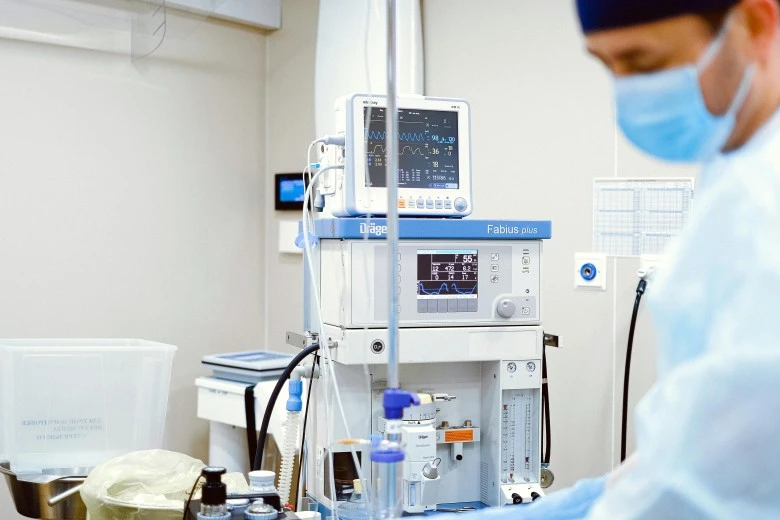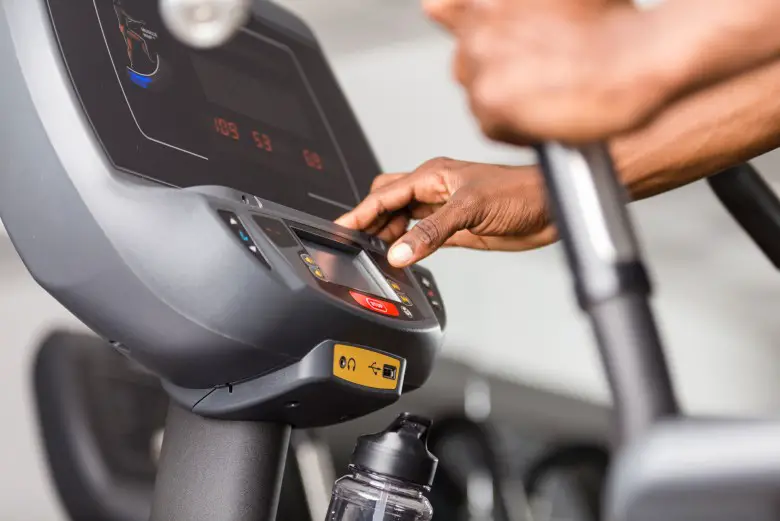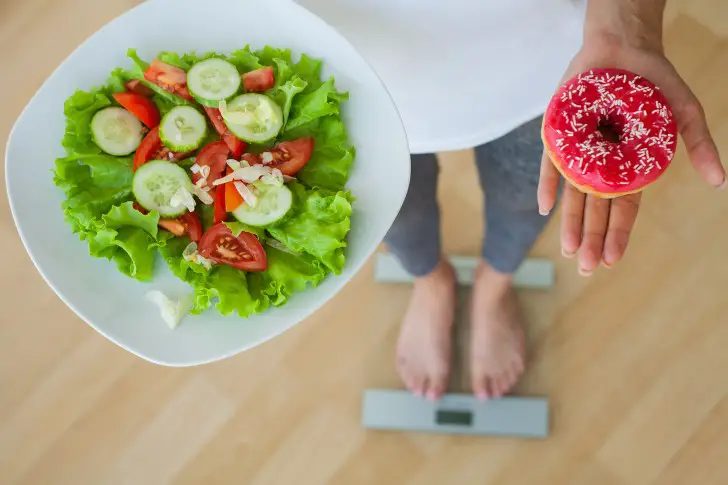News
How To Poop After Hamstring Surgery: A Complete Guide

How to poop after hamstring surgery is a common cause because of constipation. It is the very aspect on which a patient has to take a look so he can reduce his problem. In this article, we will discuss hamstring anatomy, hamstring surgery, hamstring repair surgery, causes of constipation after surgery, best foods and fibers to intake, the importance of physical activity in these to effective use of stool, hamstring strain rehabilitation, their recovery time and much more.
Let’s get to it!
Hamstrings Muscle Anatomy:
They are skeletal muscles. They are three in number and used by our bodies for work, climbing stairs, squats, and performing many other leg movements.
It comes from the English word Hamm, a group of three tendon muscles.
What Is Hamstring Injury:
In muscles and tendons, group hamstring injury is a strain in the back of the thigh. It is one of the common injuries in athletes and exercise beginners.
What Is Hamstring Repair Surgery?
Hamstring repair surgery is required if A conservation treatment has not resolved the hamstring injury or
The nature of the problem is a severe muscle tear.
Severe hamstring or Vulsion injuries occur when the tendon is entirely pulled from the bone. Hamstring Avulsions occur rarely and are often tricky to differentiate from strains or muscle tears.
When Is Hamstring Repair Surgery Indicated? How To Poop After Hamstring Surgery:
Hamstring avulsion is a severe injury, and hamstring repair surgery when the following is required:
Reattachment at hamstring muscles or tendon to the pelvis or shinbone
Muscle repair after a severe tear.
More particularly:
- Multiple tendon ruptures with more than two centimeters of reaction
- Complete rupture of all three tendons
- Unresolved loss of hamstring power with sciatic nerve involvement or impingement
- Severe avulsion in young athlete
Causes Of Constipation After Surgery: How To Poop After Hamstring Surgery:
Several factors occur in constipation after surgery:
These include:
- Narcotic pain relievers, like opioids
- The General of anaesthesia
- An inflammatory stimulus, like trauma or infection
- An electrolyte or glucose imbalance
- Prolonged inactivity
- Changes to diet wildly insufficient fiber
How To Poop After Hamstring Surgery?
How to poop after hamstring surgery is an essential aspect. Constipation occurs, which makes this process complicated. It can be challenging to use the bathroom after hamstring surgery due to pain, less mobility, and the need to protect healing legs with great care.
Take Care Of Legs:
While using the toilet use a stable technique and stool to care for surgical legs. This puts less pressure on the hamstrings.
Sleep On Back:
It is recommended that the leg be kept in a natural position. Place a pillow under the knee to slightly bend the leg and relieve tension.
Side Sleeping:
They prefer to sleep in a side position, lie with a pillow between their legs to support the injured leg, and keep it aligned.
Use a wedge Pillow:
A wedge pillow helps maintain an elevated position throughout the night, which reduces discomfort and promotes healing.
Use Suitable Devices:
While using the toilet, use devices that raise your toilet seat to reduce pressure on the hamstring. It maintains balance and gives support when you ride on and off the toilet.
How To Poop Hamstring Surgery: Take Pain Relievers Medicine:
If the doctor suggests, you take pain reliever medicine as the doctor prescribed before going to the bathroom.
Stool Softeners:
Pain medication reduces pain and leads to constipation. Use stool softener and fiber supplements a doctor recommends to make bowel movement easier.
Proper Positioning:
Sit back as far as possible on the toilet seat to keep your leg comfortable. Avoid putting pressure on the healing hamstring.
Limit Caffeine And Screen Time:
Avoid taking caffeine in the evening and afternoon time. Limit screen time before going to bed because blue light interferes with sleep.
Relaxation Techniques:
Take a deep breath and relax, which helps you stay relaxed and puts less pressure on your body, making it easy to go.
How To Poop After Hamstring Surgery Drink More Water:
Drink a lot of water to protect the body from constipation and make it easy to pass stool without staining.
Take Relax:
Take a deep breath and relax technique, which helps to stay calm and reduce tension in the body, making it easy to go.
Ask For Assistant:
Manage on your own, and if you don’t do it, ask for help and calm or reduce tension in your body, making it easier to go.
Consider Sleep Aids:
If your doctor prescribes, take sleep pills, aids, and supplements like melatonin that fall asleep quickly. However, consult a healthcare provider for sleep aids.
How To Poop After Hamstring Surgery By Take Time:
Don’t rush, but allow yourself enough time to find a comfortable position and go without straining.
Increase Fiber Intake:
Drink suitable water and take fruits, vegetables, and associated minerals. If recommended by a doctor, consider using fiber supplements like Metamucil.
Consult To Doctor:
In case of a lot of pain, immediately contact a doctor for advice. Tell your problems and take consultations.
These steps make the process comfortable and avoid complications during recovery.
How to Poop After Hamstring Surgery: What Food & Fibers To Intake:
1: Low Fiber Foods:
Processed And Refined Snacks:
Chips, Cookies, And Cakes:
These are low in fiber and have high sodium quality.
Baked Goods:
Pastries, Cookies, and Mix Cakes are made with refined flour and are high in sugar, which slows down digestion.
2: High Food And Fried Food:
Fried Food:
Fried Chicken, French Fries, And Fried Snacks:
These can be heard to digest and may show the digestive process.
High-Fat Meats:
Sausages. Bacon and Fatty Cuts of red meat contribute to constipation and inflammation.
3. Diary Products.
Cream Based Products:
Cream Soups and Sauces: High in fat and low in fiber, which may hinder digestion.
4: Sugary Foods And Beverages:
Sugar Snacks:
Candy, chocolate, and sweet desserts: High sugar content can disrupt gut bacteria balance.
5: Caffeinated Beverages:
Tea:
This can lead to dehydration.
Energy Drinks:
High Caffeine Energy also contributes to dehydration and interferes with body healing and pain management.
6: Alcohol:
Utilize Beer, Wine, and Spirits.
7: Gas-Producing Foods:
Certain Vegetables:
Cabbage, Beans and Onions:
It may cause bloating and discomfort; monitor the body’s response to these foods.
8: Spicy Foods:
Hot Peppers and spicy sauce:
Spicy Dishes:
May cause digestive discomfort and should be avoided if they upset your stomach.
9: Foods High In Sodium:
Packaged Soups, Frozen Dinners, and Canned Foods: Excess sodium leads to water retention and bloating.
How To Poop After Hamstring Surgery: Tips For Better Digestion And Recovery:
Utilize Food And Water: Use a lot of water and the best foods like fruits and vegetables.
Eat Sometimes Often And Use Probiotics: Maintain your energy level and utilize probiotics.
Listen Carefully: Pay attention to your food.
How To Poop After Hamstring Surgery: Importance Of Physical Activity:
Physical activity is essential even during recovery:
Start With Light Activity: As soon as your doctor allows, begin light walking to stimulate bowel movement.
Avoid Lengthy Sitting: Sitting for too long can lead to digestive issues. Change Position and move around as much as possible within recovery guidelines.
How To Poop After Hamstring Surgery: Best Practise For Post Surgery Care:
Proper post-surgery care eases your recovery and prevents complications:
Follow Pain Management Protocols: Use prescribed pain medication, but be aware of its constipating effects.
Rest With Recovery: Allow a person’s body time to heal, but incorporate light physics activity as soon as it’s safe.
How To Poop After Hamstring Surgery: Effective Use Of Stool Softeners:
For surgery, stool softener is the best tool.
Consult With The Doctor: Avoid staining in bowel movements.
Choose The Right Products: If you are not prescribed one, ask the doctor about the safe over-the-counter option.
Tips for preventing hamstring surgery
If you’re dealing with tight hamstrings, it’s essential to understand their broader impact. For example, tight hamstrings can cause back pain, affecting posture and daily movements. Similarly, they can also lead to knee pain, due to the strain they place on joints during activity. To avoid such issues, it’s crucial to learn how to prevent hamstring injuries through proper stretching and strengthening exercises, which can safeguard your overall mobility.
How To Poop After Hamstring Surgery: Stool Softener
Constipation is a simple disease that commonly happens after surgery. Here is how to manage it:
Surgical doctors sometimes recommend stool softeners. Stay active to relieve bowel constipation.
How To Poop After Hamstring Surgery? Recovery Time:
Rehabilitation for proximal hamstring reattachment takes some months because of the severity of the injury. Distal hamstring reattachment requires approximately three months of rehabilitation before returning to athletic activity. Your doctor will be patient when it is safe to return to sports.
Hamstring Surgery Rehabilitation: How To Poop After Hamstring Surgery:
The doctor prescribed rest and cold compression to treat pain and swelling. In addition, cold compression treatments reduce tissue
Damage due to swelling and fluid leakage from surgery and injury.
You will be given crutches and possibly back to keep hamstring muscle relaxed to ovoid straining, then repaired tissue.
The time to recover from constipation depends on a lot of factors.
This includes:
- Person overall health
- Activity levels of a person
- The diet that a person usually follow
- The time you spent under anesthesia or using narcotic pain relief.
How To Poop After Hamstring Surgery: Consulting Your Healthcare Provider:
If you encounter constipation or complications:
Seek Medical Advice:
If over-the-counter remedies and dietary changes don’t work, consult a doctor for further treatment options.
Follow-Up Symptoms:
Don’t ignore severe discomfort and lack of bowel movements, as this leads to more severe complications like impaction.
Managing Bowel Movements After Hamstring Surgery: How To Poop After Hamstring Surgery:
| Aspect | Details | Why It Matters | Recommend Actions | Potential Complications if Ignored |
| Common Challenges | Constipation from anesthesia, pain meds, and reduced mobility | Anesthesia and pain meds slow digestion. | Monitor bowel movements, adjust diet, and stay hydrated | Severe constipation, bloating discomfort. |
| Tips For Easier Bowel Movements | Elevate your legs using raised toilet seats, apply heat to your abdomen, and take your time. | Reduce strain and discomfort during bowel movements. | Use pillows for support and a warm compress for muscle relaxation. | Strain on surgical site, increased pain. |
| Dietary Recommendations | Increase fiber intake with fruits, vegetables, whole grains, and legumes | Fiber helps maintain regular bowel movements. | Include fiber-rich foods in every meal, and consider fiber supplements if needed. | Hard stools, difficulty in passing stools. |
| Food to Avoid | Processed foods, fried foods, high-fat foods, low-fiber snacks, and dairy. | These foods can contribute to constipation. | Opt for whole, unprocessed foods, and limit low-fiber and fatty food intake. | Worsened constipation slowed recovery. |
| Importance Of Hydration | Drink 8-10 glasses of water daily, limit caffeine and alcohol | Water softens stools and supports overall digestion. | Keep a water bottle handy, and track your daily water intake. | Dehydration of hander stools increases the risk of impaction. |
| Stool Softener and Laxatives | Use as prescribed or ask the doctor for OTC options like Colace and Miralax. | Helps prevent straining and ease bowel movements. | Follow dosage instructions, use sparingly, and consult your doctor if it is ineffective. | Dependency potential for overuse, rebound constipation. |
| Physical Activity | Light walking stimulates digestion; ovoids prolonged sitting. | Movement stimulates bowel function and prevents constipation. | Start with a short walk, gradually increase as tolerated, and change position often. | Increased risk of constipation and prolonged recovery. |
| Managing Constipation | Stay active, hydrate, follow dietary advice, and consult your doctor if you have symptoms. | Prevents complications like hemorrhoids or bowel impaction. | Address constipation early, use recommended medications, and adjust lifestyle. | Painful bowel movements are possible surgical complications. |
| Rest And Recovery | Balance rest with gentle movement to aid recovery and bowel functions. | Essential for healing and preventing muscle stiffness. | Follow your doctor’s guidelines, avoid overexertion, and focus on gradual mobility. | Delayed recovery decreased stiffness potential for e-injury. |
| Consulting Your Doctor | Seek medical advice for severe constipation or complications. | Ensure safe and effective treatment. | Keep track of bowel movements and report any severe or prolonged symptoms. | Risk of severe complications like bowel obstructions or impaction. |
| Pain Management | Understand the impact of pain meds on bowel Movements. | Pain meds often cause constipation. | Discuss pain management options with your doctor. | Prolonged use may worsen constipation and lead to further discomfort. |
| Post Surgery Care | Focus on wound care, infection prevention, and overall well-being. | Proper care aids in faster, safer recovery. | Follow all post-surgical instructions, and keep the surgical site clean. | Risk of infection delayed healing, and further complications. |
Conclusion:
Understanding how to poop after hamstring surgery is essential for best recovery. To manage constipation, you should focus on staying hydrated using a stool softener and increasing fiber intake. Take guidance and consult with the doctor when needed; you can prevent complications and make a healing process. If you need to ask more questions, ask in a comment below!

 Fitness1 year ago
Fitness1 year agoDiscover Elite Body Sculpting: Best 8 Method Revealed For Precision Shaping:

 Fitness12 months ago
Fitness12 months agoRealistic 6 Month Body Transformation Female: From Struggle To Power

 Fitness1 year ago
Fitness1 year agoBody Fitness Tips For Female; Unleashing Fitness Secrets

 Workouts1 year ago
Workouts1 year agoEcho Bicycle For Gym And Fitness: Comprehensive Guide

 recipe1 year ago
recipe1 year ago13 Gluten Free Egg Bites Recipes: Easy and Delicious

 Training12 months ago
Training12 months agoLeadership Coaching vs Training: Let’s Give Best Of Your leadership journey:

 Health2 years ago
Health2 years agoHow To Lose 50 Pounds in 5 Months: Is it possible ?

 Fitness1 year ago
Fitness1 year agoMindFit: The Key To Unleashing Your Inner Strength
